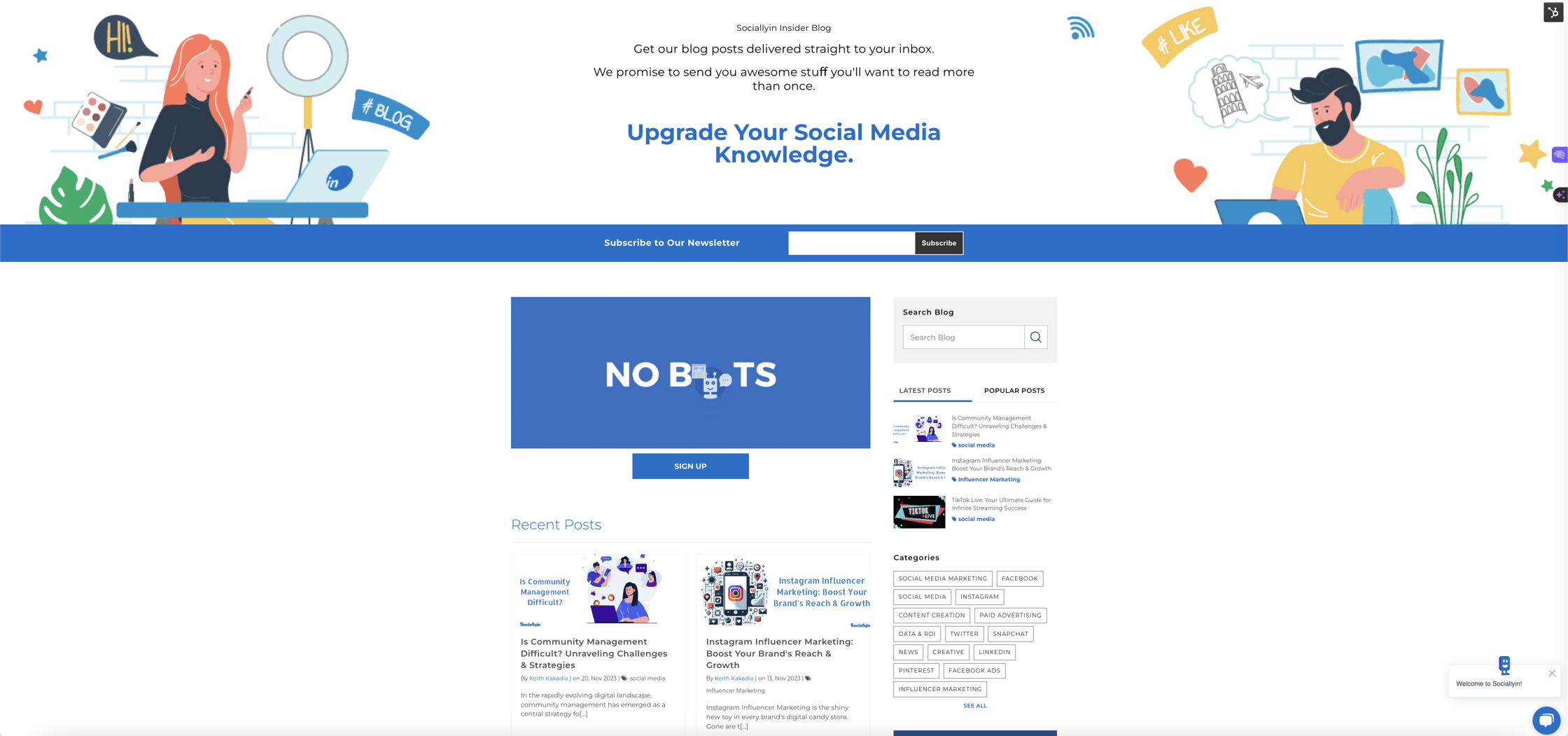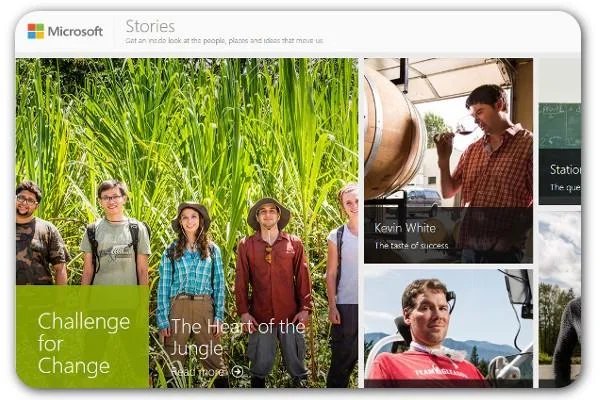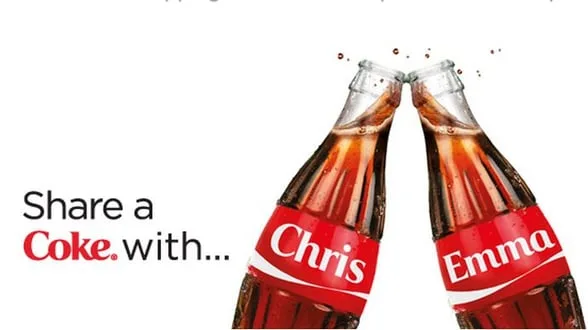Marketers need to stay on top of the latest trends to maintain a competitive advantage in today’s digital landscape. Leveraging unique content marketing examples is essential to keep on top of trends. We will take you on an exciting journey through these examples.
Marketers need to move away from traditional marketing methods. These hand-picked content marketing examples will encourage you to think outside the box and be creative.
Explore these examples, whether you’re an experienced marketer or a newbie. We provide innovative content marketing examples and show you how they work beyond the limits of traditional marketing.
What is Content Marketing?
Content marketing is the process of:
- Creating
- And distributing product/company-specific material to the best target demographic
- Publishing
We’ll walk you through each of these in a moment, so don’t sweat it if the words sound unfamiliar or you want to know more about them.
- Curating/Creating Content: Curating and/or creating content is the art of researching, writing, and designing highly targeted content for your audience. It often consists of brainstorming topic ideas or potential graphics and often involves either hiring or utilizing in-house talent or software to create the content.
- Distributing Content: This is the art of finding out where your content fits. Where is your target audience? Where will they benefit from your content the most? What platform best fits your brand? These are the questions you’ll need to ask during the distribution and planning process.
- Publishing Content: Now that your content is ready, it’s time to publish! We love to utilize tools like Sprout Social to schedule our content in advance and allow time for our incredible clients to give their full approval. This tool also allows us to schedule the content at peak times, implement “first comments” with proper hashtags, and more to get the most out of our content marketing.
Tailored Social Media Proposal
That Drives Results.
What are Content Marketing Examples?
Content marketing examples act as illustrations or “proof” for companies of what they can help you achieve or what you need to aim for when creating content for your social media channels. These content marketing examples act as a guideline that can help you achieve better results from even the earliest of your social media campaigns.
How Using Multiple Content Marketing Examples Can Boost Your Brand Name?
Let’s say that you have decided to dive into the world of content marketing. But how do you come up with content marketing ideas? And what media should you choose?
Using more than one type of content marketing media will boost your brand name, not only because users want to see diverse media types, but because using multiple types of media encourages more diverse engagement.
Here’s why experts think sticking to one content media is not beneficial:
- Not everyone digests the same sort of content, so your audience will be limited.
- The popularity of certain content changes as time goes on. For example, decades ago, newspapers were a favorite way to digest news. Today, not so much. Instead, social media has taken the role of main news distributor, among many others.
- You have to maintain a specific level of information in one space.
Mixed-media content marketing will do wonders for you, allowing your brand to branch out in a variety of directions, giving you the ability to reach people all across the globe.
What We Can Learn from Content Marketing Examples Successful Brands Use?
Why test media types, copy, and content when someone has already trouble-shooted you? The best brands have worked hard to try and optimize their strategies. We can take a lot of inspiration from them. This knowledge can be a powerful tool for developing our content marketing strategy.
There are dozens of content marketing examples on the web to choose from, and quite a bit that we can learn from each piece.
Reviewing content marketing examples isn’t just about mimicking them. Instead, it involves understanding the strategies behind their success. We spend a lot of time monitoring trends and examples of content to know what works for brands and what doesn’t. This regular, routine monitoring allows us to determine what methods work and what don’t. It also gives us an insight into how brands are carving their paths to success.
Today, we will share this research and the actionable content marketing examples you need to carry the research over to your channels quickly.
The 5 Main Types Of Content Marketing
- Social Media Content
- Blog and Written Content
- Video Content
- Email Marketing Content
- Podcast and Audio Content
#1 Social Media Content
It refers to any form of content created, posted and shared on social platforms such as Facebook, Instagram, LinkedIn, Twitter, Pinterest, etc. This content can be text, imagery, videos, infographics, memes, and anything else encouraging user engagement. Depending on the platform and audience, the content can be promotional, informational, entertaining, or a mix. The goal of this social content can vary from brand awareness, driving web traffic, and generating leads to direct product promotion.
Here are some content ideas that you can consider sharing on your social media channels:
Engaging Content
- Post content that encourages interaction from your audience
- Ask questions, encouraging them to share their thoughts and experiences
- Share polls, quizzes, or surveys
Informative Content
- Share content that showcases your expertise, business, or brand
- Provide valuable tips and tricks related to your industry or field
- Share articles or blog posts you’ve written or recommend
- Share news and updates about your business, industry, or community
Visual Content
- Use visual elements like as images, videos, GIFs to attract attention
- Share eye-catching images or infographics relevant to your brand or industry
- Post videos showcasing your products, tutorials, or behind-the-scenes footage
- Use GIFs or memes to add a fun and creative approach to your content
Promotional Content
- Promote your products or services
- Share information on new releases, discounts, or offers
- Post testimonials or reviews from satisfied customers
- Highlight collaborations, partnerships, or sponsorships
Inspirational Content
- Post content that uplifts, motivates and inspires your audience
- Share quotes, stories, or images that uplift and inspire
- Showcase accomplishments or success stories of your team, customers, or community
- Post content highlighting philanthropic efforts or community involvement
What Are Some Best Practices For Social Media Content?
- Understand Your Audience: Your audience is fundamental. Cater your content to their interests, needs, and preferences.
- Be Consistent in Posting: Consistent content can help to build a loyal following. Develop a schedule to post on your platforms regularly.
- Engage With Your Audience: Engage with followers by responding to comments and messages. This helps to build a community around your brand.
- Use Visual Content: Visual content, such as images and videos, attracts more attention and engagement than text-based posts.
- Use Hashtags: Hashtags can increase the visibility of your posts, making them discoverable to a wider audience.
- Measure and Adjust: Regularly tracking the performance of your content is key to understanding what resonates with your audience. Always adjust your strategy based on your findings.
#2 Blog and Written Content
Both blogs and written content are vital communication in today’s information age. They contribute significantly to spreading knowledge, sparking discussions, and shaping public opinion. Therefore, the value of effective written communication in blogs and other written content must be balanced. Writers must hone their skills in creating well-crafted, compelling content that resonates with their desired audience.
What Type Of Blog or Written Content Can You Create?
You can create numerous types of content for your website and blog. Here are a few ideas:
Informative Articles
These can be about any topic related to your industry, and they are a great way to demonstrate your expertise and provide valuable information to your readers.
How-To Guides
These posts show your readers how to do something. They can be very detailed and include step-by-step instructions.
Product or Service Reviews
Writing reviews or giving an in-depth look can be very valuable if your website or blog pertains to a specific product or service.
Industry News
Keeping your readers informed about what’s happening in your industry can set your blog apart and make it a go-to resource for your audience.
Lists
Lists (like this one!) are incredibly popular because they’re easy to read and can quickly provide information.
Interviews
Interviewing people in your industry can provide a unique perspective and add value to your website or blog.
What Are Some Best Practices For Blog & Written Content?
- Understand Your Audience: Tailoring your content to your audience is essential. Determine the type of material most appeals to them, their questions, and how you can best provide solutions or answers.
- Create Valuable and Interesting Content: Ensure your content is informational, relevant, and interesting. This will keep your readers engaged, improve SEO, and attract more traffic to your site.
- Use Appropriate Formatting: Ensure your text is readable and well-structured. This includes using headlines and subheadlines, bullet points, and short paragraphs.
- Optimize for SEO: Utilize relevant keywords, meta descriptions, and title tags. This helps your content rank higher in search engine results and increases visibility.
- Proofread and Edit Your Work: Correct spelling, grammar, or punctuation errors etc. These mistakes can detract from your credibility & professionalism.
- Use Images and Multimedia: Including relevant images, videos, and infographics can enhance your content and provide a more engaging experience for your readers.
- Promote Your Content: Share your blog posts or articles on social media, email newsletters, or other marketing channels.
#3 Video Content
Video content refers to digital media elements that include videos as standalone pieces or incorporated into websites, articles, social media posts, and other platforms. This form of content is an increasingly popular communication, entertainment, and information-sharing method. Video content might showcase anything from educational tutorials to promotional advertisements, animated shorts, personal vlogs, or full-length films. Are there any specific aspects of video content you’re interested in learning more about?
What Type Of Video Content Can You Create?
You can create different types of video content depending on your interests and target audience. Some popular formats include:
Educational Videos
Share your knowledge, offering tips, tutorials, and explanations.
Vlogs
Document your daily life, experiences, and opinions, building a personal connection with your audience.
Product Reviews
Offer your thoughts on various products and services, assisting viewers in making informed decisions.
Entertainment Videos
Produce amusing, engaging content, such as skits, parodies, or short films.
Travel Videos
Share your adventures and offer insights into new locations and cultures.
Interviews and Podcasts
Host discussions and conversations with exciting personalities and experts in various fields.
Livestream Events
Engage with your audience in real time through live gaming, Q&A sessions, or workshops.
What Are Some Best Practices For Video Content?
- Plan Your Content: Begin by identifying the objectives of your video content. What message are you trying to convey? Who is your target audience? A clear understanding of these aspects will guide your scriptwriting and storytelling process.
- High-Quality Production: Ensure your video’s production is high quality. This includes crisp visuals, clear sound, and well-executed editing. Good production values will make your content more appealing to your audience.
- Engage from the Start: The first few seconds of your video are crucial. They must capture the viewer’s attention and encourage them to watch the rest of the video. Try to start with a compelling scene, question, or statement.
- Keep It Concise: Attention spans are short, primarily online. Try to keep your videos concise and to the point. Consider breaking your content into smaller, digestible clips if it is lengthy.
- Add Subtitles or Captions: Many viewers watch videos without sound, especially when browsing social media. Adding subtitles or captions ensures your message is still communicated.
- Include a Call to Action: What action do you want your viewers to take after watching your video? Include a clear and compelling call to action in your video.
- Optimize for Search: Video content can be optimized for search-like written content. Use keywords in your video’s title, description, and tags to improve visibility in search engine results.
#4 Email Marketing Content
This type of content aims to engage, educate, and promote a company’s products or services. It plays a key role in digital marketing strategy by nurturing leads, maintaining customer relationships, and driving sales.
What Type Of Email Marketing Content Can You Create?
You can create various types of email marketing content to engage an audience and promote business effectively. You can include the following in your email campaigns:
Newsletters
Share company updates, industry news, or upcoming events with your subscribers. This type of content helps keep your audience informed and engaged with your brand.
Promotional Emails
Announce special offers, sales, and discounts to encourage your subscribers to buy. Make sure to highlight the benefits and time-limited nature of the promotion to create a sense of urgency.
Educational Content
Provide valuable information and resources about your industry or products. This can include blog posts, guides, tutorials, or webinar invitations. Educational content helps establish your brand as an expert and builds trust with your audience.
Product Updates
Introduce new products or features to your subscribers. Showcase the benefits and functionalities of your offerings and provide clear calls to action for further exploration or buy.
Surveys and Feedback Requests
Engage your subscribers by asking for their opinions and feedback. This helps you improve your products & services to show your audience that you value their input.
Personalized Recommendations
Send personalized product or content recommendations based on your subscribers’ browsing history, preferences, or buy patterns. This type of content can increase conversion rates and customer satisfaction.
Re-engagement Campaigns
Target inactive or disengaged subscribers with special offers or content designed to rekindle their interest in your brand.
What Are Some Best Practices For Email Content?
- Have a Clear Subject Line: Your subject line should be concise and descriptive. It should give the recipient a good idea of the email’s content.
- Be Concise: Keep your emails short and to the point. Long, wordy emails can be overwhelming and often lead to the recipient needing more essential details.
- Use a Professional Tone: Always maintain a professional tone in your emails. Avoid using slang or informal language.
- Write in Active Voice: Use active voice instead of passive voice. This makes your writing more direct and engaging.
- Use Bullet Points and Lists: Bullet points and lists help to break down complex information, making it more readable.
- Include a Clear Call-to-Action (CTA): If you want the recipient to take some action, be clear about it. Your email should state the next step(s).
- Proofread Before Sending: Always proofread your emails before sending them. Checking for spelling, grammar, syntax, and punctuation errors is crucial as it affects the readability of your email.
#5 Podcast and Audio Content
The content of podcasts can range from news and stories to education and entertainment. They can be an individual’s outlet for expressing views or a platform for experts to share knowledge on a particular topic. Podcasts are a series of spoken-content digital files that users can subscribe to, whereas audio content is a broader term that includes any audio-focused media.
What Type of Podcast and Audio Content Can You Create?
When crafting content for podcasts, the opportunities for creativity are extensive. Here is a range of content you can produce:
Interviews
A classic podcast format that allows exploring a topic through conversations with experts or exciting personalities.
Panel Discussions
This brings several experts or opinions on one platform, facilitating a comprehensive understanding of a particular topic.
Informational or Educational Content
Podcasts can be an excellent medium to share knowledge in a specific field, making the information engaging and digestible.
Storytelling
Poetry, fiction, true stories, or historical events can be presented intriguingly and immersively.
Travelogues
Sharing travel experiences can attract listeners, giving them valuable tips and insights into various cultures and places.
Book or Film Reviews
Analyzing and discussing books, movies, or TV shows can attract a dedicated audience with the same interests.
Lifestyle and Health
Sharing personal experiences, advice, or expert opinions about health, wellness, food, fashion, or other lifestyle fields
News and Current Affairs
Regular podcasts on recent events and news can help listeners stay informed.
What Are Some Best Practices For a Podcast Content?
- Planning and Preparation: Outline your episodes, research your topics, and create a well-structured script to ensure you present a clear and coherent message.
- Consistent Schedule: Releasing episodes helps create a loyal fan base and gives your listeners something to look forward to. Be reliable and stick to a release schedule.
- Sound Quality: Invest in a good microphone and recording equipment, and use sound editing software to make sure the audio quality is clear.
- Engaging Content: Choose compelling topics relevant to your target audience and focus on delivering valuable insights or exciting stories to keep listeners engaged.
- Audience Interaction: Encourage feedback on your podcast and interact with your listeners through social media or other platforms to create a sense of community and loyalty.
- Use Clear and Concise Communication: Speak, avoid jargon or technical language, and ensure your pacing and tone of voice suit your audience.
- Promotion and Networking: Build relationships with other podcasters or industry influencers, use social media platforms, and request ratings and reviews to market your podcast and increase your reach.
17 Innovative Content Marketing Examples
Humor almost always works to engage and delight an audience.
Hence, through short humor-filled clips and snippets, Old Spice gained popularity with those young and old over multiple channels.

Cool, right? Humor is a great tool for breaking the ice and delivering a message without making consumers feel as if you’re pushing your products, which in turn can foster deeper, longer-lasting relationships between businesses and customers.
Click the image above to check it out!
#1. L’Oreal Paris, Try Before You Buy
L’Oreal Paris uses one of content marketing’s best examples: The virtual make-up try-on!
It gives consumers the opportunity to try it on before they buy, from the comfort of home!
No more finding out that a shade doesn’t work for you before footing the bill for it. Genius, right?
#2. McDonald’s Customer Service “Question Time”
Have you ever wondered what ingredients make up a burger patty?
Receiving answers to questions like this and more can encourage open conversation between large brands and consumers to drive more awareness and loyalty.
This successful content marketing strategy has helped McDonalds:
- Build connections by being honest
- Help consumers feel more “in the know” and connected
- Drive more authenticity across platforms
Click the image below to learn more!

#3. Glossier and User-generated Content
Have you ever tweeted about a product you loved? Glossier’s genius marketing plan is to use these epic tweets on their Instagram. It is a win-win because:
- People love to be featured
- UGC, (or user-generated content) is cheap
- You’ll experience more reach and more engagement
Click the image below to learn more!

#4. GoPro’s Use of Visual Content
As of 2021, the appeal of visual content has grown. People adore infographics and videos. GoPro takes these statistics and combines them with its brand philosophy. All to provide the audience with a plethora of unique and fun visual content.
As a result of this, GoPro has 10.4 million subscribers on YouTube! If you want to dive into this medium, remember:
- The content should be high quality
- You should always take the most creative route
- Keep it short! People often click on short, bite-sized videos that are a minute long.
Click the image below to learn more!

#5. Ebooks
Another great content marketing example is ebooks!
Ebooks may seem complicated, but Amazon’s handy tools can have to self-publishing in no time!
#6. Blogs
If you have a website, we 10/10 recommend setting up a blog.
Blogs can drive traffic to your website and make excellent social media posts when you’re not sure what else to post! 🙂

#7. White Papers
Whether you’re releasing news about a new service or are looking to educate your audience about the finer points of your products and services, white papers can be powerful tools in the world of social media marketing.
#8. Superdrug: Combining Media for an Extra Boost
In a recent body positivity campaign, Superdrug asked various editors to photoshop a model according to beauty standards in their region.
This unique campaign led them to gain:
- 1 million shares and 3 million views
- International news coverage
- More than 1,000,000 page views
Sometimes, encouraging your audience to think outside the box and then sharing their creations can be the most powerful content marketing strategy.
#9. Microsoft Interesting “Stories” Blog
What connects one to each other? It’s our humanness! Our stories capture the essence of our experiences in the best way.
Microsoft’s creative marketing team takes this and makes it one of the best examples. Its “Stories” blog gets people to trust them and buy from them.

#10. Garyvaynerchuck.com
GaryVee started his career from interactive blogs and webinars.
Today, he is the co-founder of Vayner media and two-times bestselling author.
Sometimes, content marketing won’t work without combining the perfect amount of each medium with a good plan.
Don’t give up if things don’t work immediately!
#11. Hashtag Campaigns – Red Cross
Imagine building excitement while getting free content. 🤔
Red Cross’ #DoingMyPart campaign lead people all across the globe to post pictures on their social media using the campaign hashtag, which meant ordinary people could promote them in the best possible way!
#12. Hootsuite’s Viral Video: “A Game of Social Thrones”
Social media management can be a little boring and a hassle, can’t it? But leave it to Hootsuite to make it fun! Check out the link below to watch the video and see for yourself:
Now, what makes this idea the best?
- The video builds on one of the world’s most loved television series.
- It is short and sweet
- You learn about the brand while having a little fun!
#13. Shutterstock’s Trend’s Report
People love reliable statistics and data. Shutterstock used this and created an innovative trend’s report on:
- Pictures,
- Music,
- Videos, and more
This step increased Shutterstock’s site visits by about six million!
You can check it out here: https://content.shutterstock.com/creative-trends/
#14. Rolex’s Use of Pictures
As we discussed earlier, visual content marketing is on the rise. Rolex uses Instagram photography to capture its brand’s iconic class. It does so through simplicity and classy style of pictures. That’s the reason the brand has a whopping 7 million followers on Instagram.

#15. Burberry
Burberry used people’s desire to connect with others. And they combined it with mobile technology. It created this software called Burberry Kisses, which lets its users send virtual kisses to anyone. You can check it out here.

#16. Charmin’s Use of “Sit or Squat” App
Everyone needs to use a toilet. But how do you know where to find one when outside? Charmin’s Sit or Squat app allows you to do that. This app is not only fun to play with but is also very practical!
You can check it out by clicking on the image below:

At this point, who hasn’t heard of Coca-Cola’s “Share a Coke” campaign?
Coca-Cola took a bunch of the most common names and printed them on the label. Here’s why it was so successful:
- Everybody loves talking about themselves
- Seeing your name on the bottle sparks joy and conversations
- Coke’s use of the word “share” targets an emotional response in people

Are you thinking about what your product can make people feel? Come on over to Sociallyin to get started on customized marketing!
Frequently Asked Questions
Getting Started with a Content Marketing Strategy
Starting content marketing strategy, there are essential steps. Make sure that you maintain the highest standards of written communication throughout the process. Below are the important guidelines and aspects to consider when creating your strategy.
Research
- Identify your target audience: Understand who your potential customers are, their preferences, and what platforms they use most.
- Analyze competitors: Study what successful competitors are doing and learn from their strengths and weaknesses.
- Discover trending topics: To create relevant and engaging content stay current with industry trends.
Set Objectives
- Define clear goals: Establish specific, measurable, attainable, relevant, time-bound objectives for your marketing strategy.
- Determine key performance indicators (KPIs): Decide on measurable metrics to track your progress and determine if you’ve achieved your objectives.
Content Creation
- Select formats and platforms: Choose the type of content (e.g., blog posts, videos, podcasts) and platforms (e.g., Facebook, Instagram, Twitter) that best suit your identified audience and objectives.
- Develop a content calendar: Schedule when and how often to publish content on your selected platforms.
- Write and design content: Ensure high-quality writing that is appealing and free of grammatical errors.
Distribution
- Use many channels: Share your content across all platforms to reach a broader audience.
- Engage with earned and paid media: Consider using a mix of organic reach (search engine optimization, social sharing) and paid promotion (display ads, sponsored content) to maximize exposure.
Analyze and Optimize
- Monitor KPIs: Continuously track your chosen KPIs to check the effectiveness of the content strategy.
- Learn and adjust: Analyze your performance data to identify areas for improvement and make necessary adjustments to your strategy.
By following these guidelines and maintaining an error-free, focused approach to your written communication, you can create a solid content marketing strategy that drives growth and achieves your business objectives.
Contact our social media marketing experts TODAY for a unique insight into elevating your brand online. Our team will provide content, creative copy, social community management, brand monitoring, reporting, and more. You can sit back and wait for results!
Tailored Social Media Proposal
That Drives Results.
Read More Related Article….
42 Thought Leadership Content Examples for BRAND Success
11 Canva Alternatives | Design Your Social Media Content


